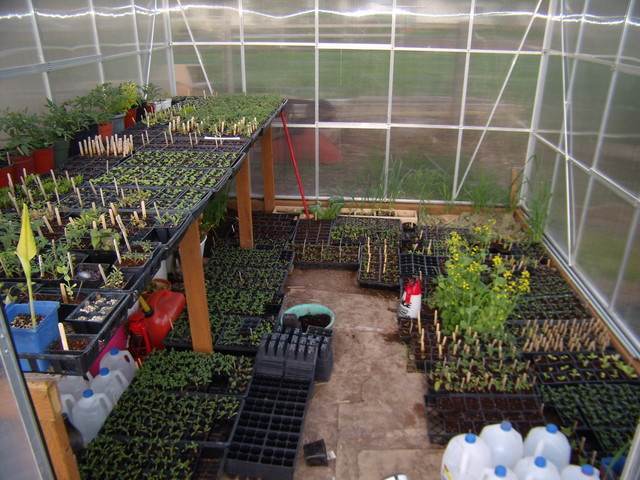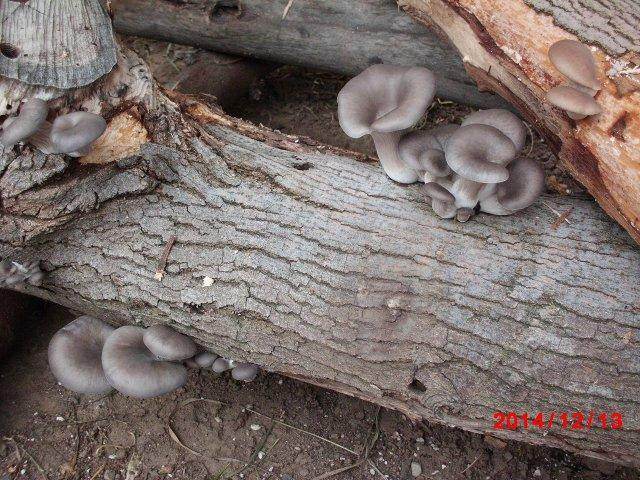












 1
1




Eric Bee wrote:Greenhouses are very common for year-round production, especially of greens but also of things like tomatoes -- totally depends on your climate or how much you want to heat the GH. The plants aren't dormant... they are growing.
















 1
1






 1
1




 1
1




 1
1













That's the way it looks, Kyrt. Here's something from the article in Johnny's you linked to :So this is bunk, we've confirmed that at least some plants will continue to grow from photosynthesis of any measure so long as they're warm enough?
I believe it is safe to say that this is accurate, but perhaps the 'most' after the dash should be underlined and in bold, or simply italicized. Some plants are going to do just fine (like those that R Ranson mentioned), but fine is relative to what it is capable of given the present daylight/darkness ratio. The photosynthesis will be greatly increased, thus growth increased, as the days get longer than 10 hours, and the reverse as days get shorter, and some plants will simply stop growing, go dormant, or die in winter light conditions. There is only so much growth that can happen with limited light, and some plants are simply not going to grow at all, like the basil mentioned in the Johnny's article. Thanks for sharing that, by the way. It was a good read.Most plants do not grow when day length is less than 10 hours. Even if the temperature is kept within the optimum range — for example, in a climate-controlled greenhouse — most plants will just sit dormant until the magic 10 hours of light per day arrives.
"Never doubt that a small group of thoughtful, committed citizens can change the world; indeed, it's the only thing that ever has."-Margaret Mead "The only thing worse than being blind, is having sight but no vision."-Helen Keller










 2
2




Just because a plant may go dormant, does not mean that it can not be harvested. If one is planting crops in the late summer or fall and they are young as late fall progresses into winter and their growth begins to slow down or go into dormancy, that is fine. (Eliot Coleman says that younger plants are much hardier to deal with the cold) Plant enough that you can harvest them all winter, despite the slower growth rate. The warmer days, and the days with more light, they will grow, if they are the right species. Lettuce, Kale, Chard, and many other early season greens can freeze solid, and still live. Some of the more tender plants, like lettuce, will be mushy if harvested when frozen, but if left to thaw while still on the plant as a warmer day comes upon it, it will be solid and crisp again, and delicious (the cold winter air gives it some more sugars or something... definitely brings out flavor). Some plants can only take such freeze/thaw cycles so many times before they are ulimately unrecoverable mush, but many can be harvested outdoors (with no greenhouse/row covers/cloches/cold frames) right into the winter where I live, and it get's pretty extreme up here some winters... though you wouldn't have known it this last week-it's been stupid warm for November. Some locations have too many freeze thaw cycles during the winter, and so some outdoor annuals can not easily stand up to it. There are bound to be some that can. Save those seeds.Does anyone use them for full growth, I.e. year round harvesting?
"Never doubt that a small group of thoughtful, committed citizens can change the world; indeed, it's the only thing that ever has."-Margaret Mead "The only thing worse than being blind, is having sight but no vision."-Helen Keller





 2
2




Hans Albert Quistorff, LMT projects on permies Hans Massage Qberry Farm magnet therapy gmail hquistorff




Nathan Surendran wrote:Google 'walpini'
 2
2












Joy Oasis wrote:I wonder, if anyone tried hot beds, made with decomposing manure underneath the soil? There is a book published in UK about it by Jack First. He says, that it was used extensively in France before WW1 to grow lettuce and other crops commercially. I think those beds could be put in the ventilated green house for added warmth.















"Stranger, you's a tresspassin' on my dirt farm."
-Cletis the slack jawed yokel




casey lem wrote:Deb Rebel,
Thank you for point number four you made, windbreaks! It had never occurred to be as a possibility to extend the life of plastic on hoop houses, AND help retain internal temps. We currently are doing the pvc frame staked on rebar w/ 6 mil plastic. I don't like the idea of plastic, but it's the option we have now. Also, when parts of it tear, it can be cut up for smaller cold frames, window insulation, etc. Anyhoo, WINDBREAKS! Next stop at Goodwill, I'll be picking out whatever sizeable fabric I can find for said project. What a low tech no brainer!




Eric Bee wrote:
Joy Oasis wrote:I wonder, if anyone tried hot beds, made with decomposing manure underneath the soil? There is a book published in UK about it by Jack First. He says, that it was used extensively in France before WW1 to grow lettuce and other crops commercially. I think those beds could be put in the ventilated green house for added warmth.
Yes, I have done this in a greenhouse and still do this more often than not when making raised beds outside. Typically raw horse manure and straw, covered by 6" or so of finished compost/soil. The sides of the raised beds I construct to provide some air. I never read a book about it, just did it after reasoning it made sense but my results, while worthwhile enough for me to keep doing it, don't provide the kind of warming action I hoped for. I will have to look for that book to see if I'm doing it wrong or if that's just the way it is.









|
We all live in a yellow submarine. Me, this cat and this tiny ad:
Rocket Mass Heater Resources Wiki
https://permies.com/w/rmh-resources
|







